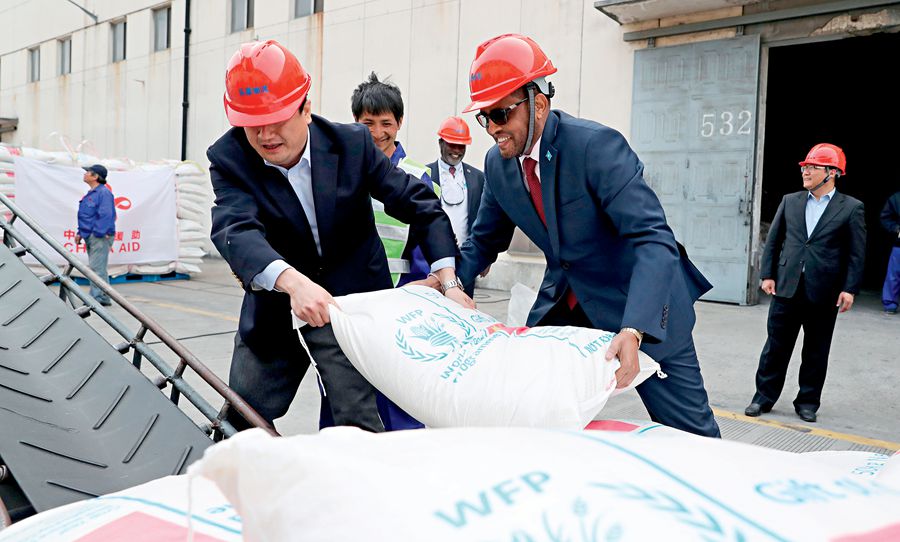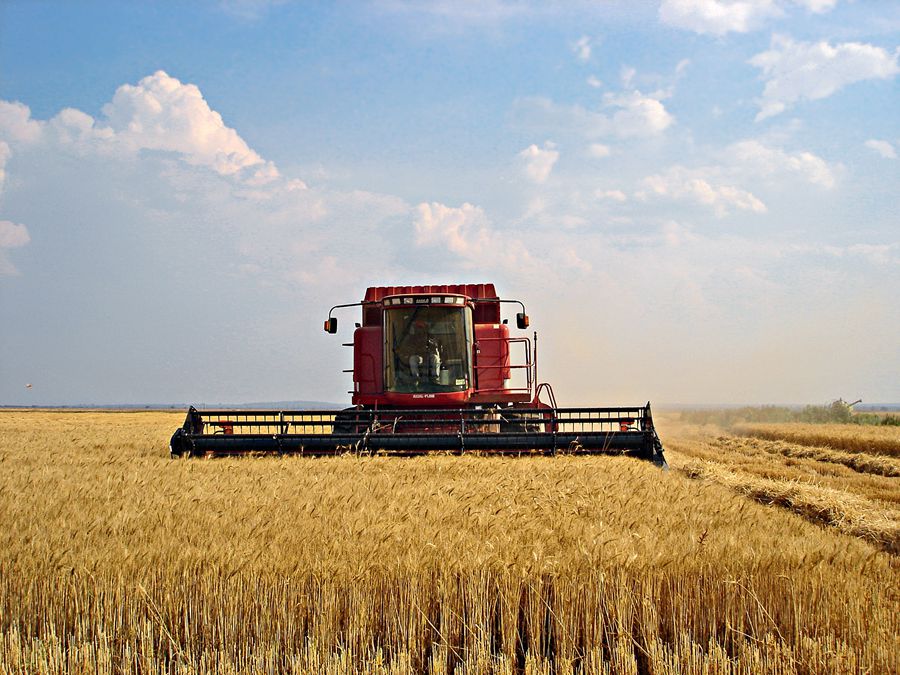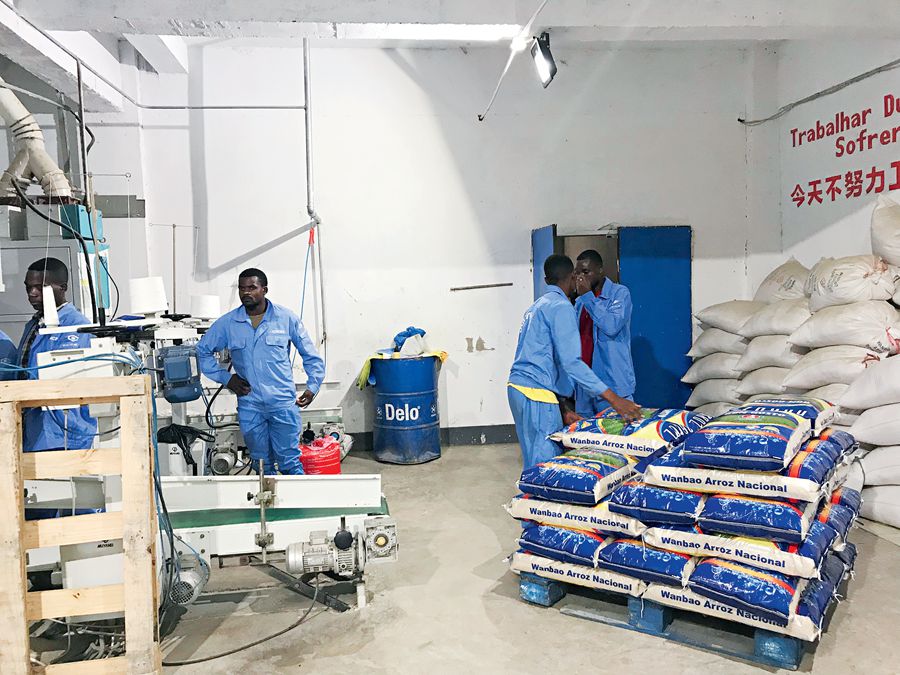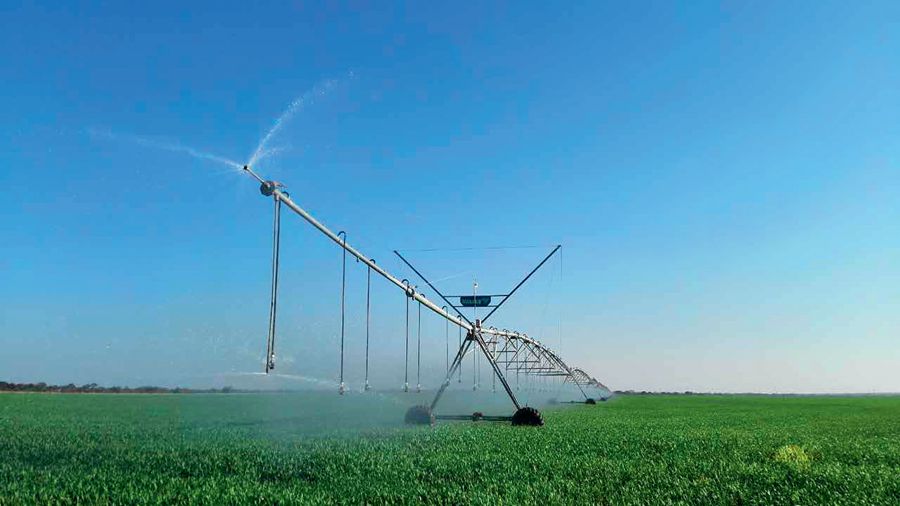FOR a long time, agricultural development and food production in Africa have been severely constrained due to various reasons. These include insufficient agricultural infrastructure, lack of breeding capacity, and a poor level of agricultural mechanization. In addition, in recent years, due to various factors such as natural disasters and epidemics, the food security situation in many African countries is not optimistic.
One of the worst hit regions is sub-Saharan Africa, where the occurrence rate of undernourishment rose from 21.1 percent in 2015 to 23.2 percent in 2017. For this purpose, the Chinese government, assisted by the South-South Cooperation Assistance Fund in cooperation with United Nations World Food Program (WFP) has been helping to solve the food security crisis in African countries through food aid and other means.

The Chinese government, assisted by the South-South Cooperation Assistance Fund in cooperation with United Nations World Food Program (WFP), has been helping to solve the food security crisis in African countries through food aid and other means. The emergency food aid to three African countries begins shipping from Shanghai on April 12, 2019.
In this regard, the emergency food aid to Somalia, South Sudan, and the Democratic Republic of the Congo began shipping from Shanghai on April 12 this year.
In fact, in addition to food aid, in recent years, China has also invested in agricultural projects, dispatched agricultural experts to provide technical assistance, and increased the construction of agricultural technology demonstration centers in Africa. The combination of investment and assistance has helped African countries improve their agricultural production capacity and solve food supply challenges.
From Recipient to Donor
In November 2018, the United Nations Food and Agriculture Organization (FAO) and China’s Ministry of Agriculture and Rural Affairs jointly held the Ministerial Forum on Global South-South Cooperation in Agriculture in Changsha, Hunan Province, and adopted the Changsha Declaration. The declaration mentions that the FAO, the International Fund for Agricultural Development, and the World Food Programme (WFP), have witnessed China’s transition from an aid recipient country to one of the most important partners and contributors of South-South Cooperation.

Wheat harvest underway in a farm of Johnken Estates Ltd. in Zambia.
As the most populous developing country in the world, providing food and clothing for more than 1.3 billion people has always been a great challenge in China’s development. China began accepting international food aid from the WFP when it resettled Chinese Vietnamese refugees in 1978. By the end of 2015, WFP had implemented nearly 70 unpaid food aid projects in China, covering 214 cities and counties nationwide. The total amount is US $925 million, benefiting more than 35 million impoverished people in China. Meanwhile, even during tough times, China did not stop its delivery of foreign aid. In 2005, when China stopped receiving aid, the country delivered food donation of 577,000 tons, the third largest in the world after the United States and the European Union.
In addition, since the signing of the Memorandum of Understanding with the FAO in 2006, cooperation between China and the FAO has continued to deepen. In 2009, China donated US $30 million to the FAO Trust Fund and in 2015 donated US $50 million to South-South Cooperation projects. The South-South Cooperation Trust Fund has benefited 37 developing countries in Africa, Asia Pacific, and the Caribbean, and more than 1,000 Chinese agricultural experts and technicians have gone to those countries to provide technical services. Besides, China has provided capacity building training for more than 1,000 agricultural policy officials and technicians in more than 100 developing countries around the world, as well as providing technical assistance, financial support, and development programs for more than one million farmers in other developing countries.
Li Xiaoyun, dean of the China Institute for South-South Cooperation in Agriculture, summed up China’s experience in foreign agricultural aid. He said that China’s foreign agricultural assistance has always been based on the direct sharing of experience. In the 1960s and 1970s, the establishment of farm and agricultural experiment stations was the main focus. After the 1980s, the contract responsibility system was applied to foreign agricultural aid projects. In the past decade, the market-driven agricultural technology transfer model was applied to the foreign agricultural aid work. A similar process has taken place in agricultural assistance and cooperation in Africa.
“China, Wanbao”
The Wanbao rice farm project in Xai-Xai (Gaza Province, Mozambique), about 210 kilometers from the capital Maputo, is the largest rice plantation invested in by China in Africa.

Johnken Estates Ltd. implements contract management for all local employees. It strictly abides by Zambia’s laws and regulations.
The project was built in 2011. At that time, the local people had never planted rice, as the main food was cassava, corn and soybeans. During the past eight years, the project has developed into a comprehensive industrial park, covering an area of 20,000 hectares integrating rice cultivation, production, storage and sales. At peak periods it employs more than 900 local farmers. It has also attracted participation of around 500 farmer households, bringing them an increased income of US $3,000 at most.
The project operates under the cooperative mode of “company + small farmers.” In addition to planting, the company also trains local farmers to spread rice planting technology. The project provides seeds, machinery, and planting techniques. After the rice is harvested, it is repurchased by the project. After deducting the cost of seeds and machinery, it pays for the farmers’ grain and solves the marketing and sales aspects of rice production. In this way, since 2012, the project has trained 1,500 local families to grow rice. The farmers have become cooperative growers who have been given technology skills and now have a good income. In the planting season of 2018-2019, Wanbao’s planting scale expanded from 2,100 hectares to 2,400 hectares, and the number of local cooperative farmer households was almost 500. The cooperative planting scale is about 500 hectares, and the harvested rice exceeded 17,000 tons.
Meanwhile, the project has basically completed the construction of canals, culverts, pumping stations, and warehousing, updated the seed resources, and improved planting techniques such as machine-transplanting seedlings, regenerated rice, soaking, and germination. More than 20 training courses on agricultural vehicles were conducted to train more than 150 local agricultural machinery drivers, promote large-scale rice planting technology cooperation, as well as upgrade local agricultural operation technology and production.
Walking on the road near the Wanbao project, every time the locals see Chinese passing by, they will greet them by saying “China, Wanbao!” In this way, they expressed their appreciation for the Chinese company that brought change to the local community. Fruk, an administrative assistant at Wanbao, entered the project as a tractor driver. During the past 12 years, he has experienced many changes in his hometown. Today, his children have completed college studies, his daughter has become an English teacher, and his son has just completed an internship at the Wanbao Rice Factory. “In the years of working at Wanbao, I learned a lot of agricultural machinery operations, learned how to be a translator, and learned how to be an administrative assistant. Over the years, I grew up with Wanbao, and my family’s lifestyle is improving with the development of Wanbao.”
Like Fruk, there are many local people who benefit from the Wanbao project. The locally produced rice brand has also been named “Bom Gosto” (good taste) by Mozambique’s former President Armando Guebuza, becoming a well-known brand in the local area.
In March 2019, tropical cyclone Idai made landfall in Mozambique, causing huge life and property losses. Wanbao helped guarantee food supply in the disaster area at the time of impact, and donated 100 tons of rice to the disaster area to support post-disaster reconstruction.

A modern sprinkler irrigation system of Johnken Estates Ltd.
Like Wanbao, in recent years lots of Chinese private companies have invested in agricultural projects in Africa via funds like the China-Africa Development Fund. By the end of 2017, Chinese companies had invested in 117 agricultural projects with each sum more than RMB 5 million in more than two-thirds of African countries, covering a variety of agricultural fields such as planting, fishery, and agricultural products processing. In countries such as Zambia, Guinea-Bissau, and Madagascar, China’s cooperation projects in crop planting and breeding have become the guide for local agricultural development. Take the CSFA (China State Farm Agribusiness Group) farm in Zambia as an example. This farm, built in the 1990s in the wilderness with no water and electricity, has provided more than 4,200 jobs for the local area. It has also provided free housing for more than 4,000 families, and enabled more than 15,000 local people to have enough food and clothing.
From Project to Technology
In June 2008, the Madagascar Hybrid Rice Demonstration Center, built by the Hunan Academy of Agricultural Sciences in China, was launched in a town more than 40 kilometers from the nation’s capital of Tananarive. In November of that year, five hybrid rice experts from the Hunan Academy of Agricultural Sciences arrived in Madagascar.
Madagascar has a long history of rice cultivation, but due to the small amount of arable land and low yield of rice, it still needs to import over 200,000 tons of the crop every year. Hu Yuefang is one of the experts sent by the Hunan Academy of Agricultural Sciences to Madagascar 10 years ago. In order to develop high-yield strains adapted to different climates in Madagascar, he has gone to almost all rice growing areas in Madagascar within the decade to learn about local conditions. Under the guidance of Yuan Longping (father of hybrid rice), Hu led the team to successfully develop three high-yield hybrid rice strains suitable for the local soil and climate. It turned out that the yield per hectare was 10.8 tons, far higher than the local output of about three tons per hectare. This is of great significance for Madagascar’s grain production and food self-reliance.
Since the establishment of the center, more than 20 agricultural technology experts from China have arrived to promote hybrid rice planting technology, and monitor the 40,000 hectares of hybrid rice cultivation. As a result, local rice production has increased by more than 120,000 tons.
In addition to Madagascar, Guinea-Bissau, Benin, Mozambique, Sudan, and Liberia, Rwanda and other countries in Africa all have China’s cooperative agricultural technology demonstration centers. These centers have not only brought advanced agricultural planting techniques to local areas to help solve the food problems, but also cultivated a large number of farmers to become familiar with the technology.
In September 2018, Chinese President Xi Jinping announced at the opening ceremony of the Beijing Summit of the Forum on China-Africa Cooperation that China would launch eight major initiatives in collaboration with African countries in the next three years and beyond.
China will support Africa in achieving general food security by 2030, and work with Africa to formulate and implement a program of action to promote China-Africa cooperation on agricultural modernization. China will implement 50 agricultural assistance programs, provide RMB 1 billion of emergency humanitarian food assistance to African countries affected by natural disasters, send 500 senior agriculture experts to Africa, and train local young researchers in agri-science and entrepreneurs in agri-business.
According to statistics, China has signed memorandums of understanding or protocols on agricultural cooperation with nearly 20 African countries, and has established agricultural technology demonstration centers in more than 20 African countries. Nearly 100 foreign aid expert groups have been dispatched to about 40 countries. More than 300 crop varieties have been tested in African countries, and in excess of 500 practical technologies have been imparted. China is working hand in hand with other developing countries, including African countries, to solve global food problems and achieve the UN Millennium Development Goals.
LI JUN is a staff member at China-Africa Development Fund.



